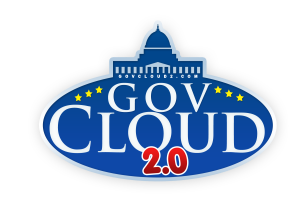 The principle theme of Cloud 2.0 is the business transformation required to progress through a “1.0 to 2.0” evolution.
The principle theme of Cloud 2.0 is the business transformation required to progress through a “1.0 to 2.0” evolution.
In the case of the public sector, this is ‘GovCloud 2.0‘ and means adoption of Open Government best practices, which we can illustrate through discussing a hypothetical scenario ‘MERX 2.0’.
MERX is the main portal web site the Canadian Government uses for e-procurement, and is fundamentally a 1.0 type site and business model.
So these best practices could be applied to upgrade it to MERX 2.0, and would result in ‘Open Government Procurement’, achievable using the multi-dimensional aspects of OG that encourage openness at a number of different levels:
- Open Data – Publishing data in a reusable form.
- Open Source – Using free open source software.
- Open Innovation – Making business models universally accessible.
Open Procurement
Before diving in to the details of these, it’s essential to first understand what the problems are that need solved, it’s easy with these new trends to simply invent technology for technology sake without any real business case.
Business transformation is driven by clearly articulated desired business benefits, and in the case of procurement I’d suggest the two key goals of paramount importance are i) tackling procurement process inefficiencies to achieve better value for money for taxpayers funds, and ii) making procurement more Open and accessible to small businesses and socially excluded groups.
In short if you’re IBM you are at one end of the scale and will have relatively easy access to learn about and influence procurement opportunities, if you are a new immigrant living in poverty, you’re at the other with a snowballs chance.
The paradoxical challenge for government is that they must make the best decision, including supplier abilities, reliability and safety hence IBM, however equally they are also charged with creating an inclusive society that proactively sets out to address these types of social inequalities.
For Canada it’s a particularly painful irony because i) the nation is suffering from an Innovation Gap that means small start-ups are starved for financial and other support, and ii) the country desperately needs immigrants to avoid a population crisis, the nation is heavily weighed down with the proportion of their baby boomer retirees .
MERX 2.0 – Tagging the knowledge economy
These new GovCloud 2.0 technologies and business models are key because of their ability to resolve this paradox.
It’s not practical or scalable to try and directly include all socially excluded individuals or combat the cronyism where it occurs, but you can address the issues systemically, you can fundamentally design a more Open procurement system that truly does level the playing field.
In terms of the role technology can play in helping achieve these transformation goals, we can zoom in on one specific aspect of the MERX operations, what they call ‘GSINs’ – Goods and Services.
The theory is that this is a taxonomy of terms that can be used to classify RFPs so that they are better organized and easier to work with. Great in theory but the reality doesn’t work out quite so well, for example check out this recent RFP from Shared Services Canada for their Email Transformation project. There are over a hundred GSINs applied, including:
- AG414668: WIND ENERGY SYSTEMS (R&D)
- B204A: SEISMOLOGICAL STUDIES
- K113A: SNOW PLOWING AND REMOVAL
- K100AE: CLEANING SERVICES, DUCT-EXHAUST SYSTEM – LIGHT FIXTURES
Helpful eh! Obviously if I wanted to find consulting work for email migrations the first thing I would look up would be Duct-Exhaust Systems… 🙂
It’s clear that this aspect of the RFP submission process has never really been thought through, and so this could be the ideal starting point for this type of GovCloud 2.0 transformation. Better quality management procedures would be a first step and then technologies which better utilize this indexing.
Drupal is one example of an Open Source content management system that could be used as a modernizing replacement for a MERX portal, and it offers a myriad of social media features on top of taxonomy classification methods that could be used in all kinds of innovative ways. For example it offers community sub-groups on the site, that you might assign to these categories, such as a suppliers “K113A group” for those who provide snow removal services.
That way you could subscribe for email or RSS alerts for each relevant RFP that is posted, and more importantly, any one could join this group and tap into the social media features for business networking purposes. ‘Teaming’ is the fundamental method by which small businesses can access government business, via becoming sub-contractors to those who already have the supplier contracts, but how do you find them? How do you advertise to them to become a partner? This is what social media is ideal for.
This also offers the ideal toolset for government agencies too, for example if you are an agency specialising in helping new immigrants, you could associate your program services in a relevant manner.
One simple example is that you could offer Snow Plow training services, and tag it with the same taxonomy term. That way it would show alongside RFPs of this type, and so individuals can clearly see a route to follow to become more engaged into government procurement.
With it so clearly defined via the web then it would be globally accessible and act as a compelling incentive to attract more immigrants.
If you’d like to learn more, join our webinar where we will be showcasing different demonstrations of these types of new social media platforms and how they can be used for eProcurement and other scenarios.




Great topic. For a period of time I use to run solicitations for good and services in the private sector using an eProcurement tool. It was amazing. I really like the idea of building a tech platform to support Open Procurement.